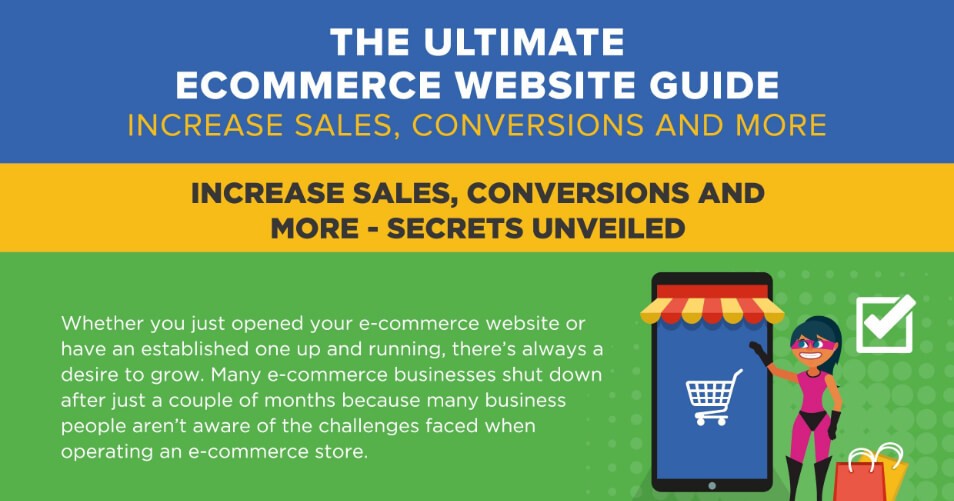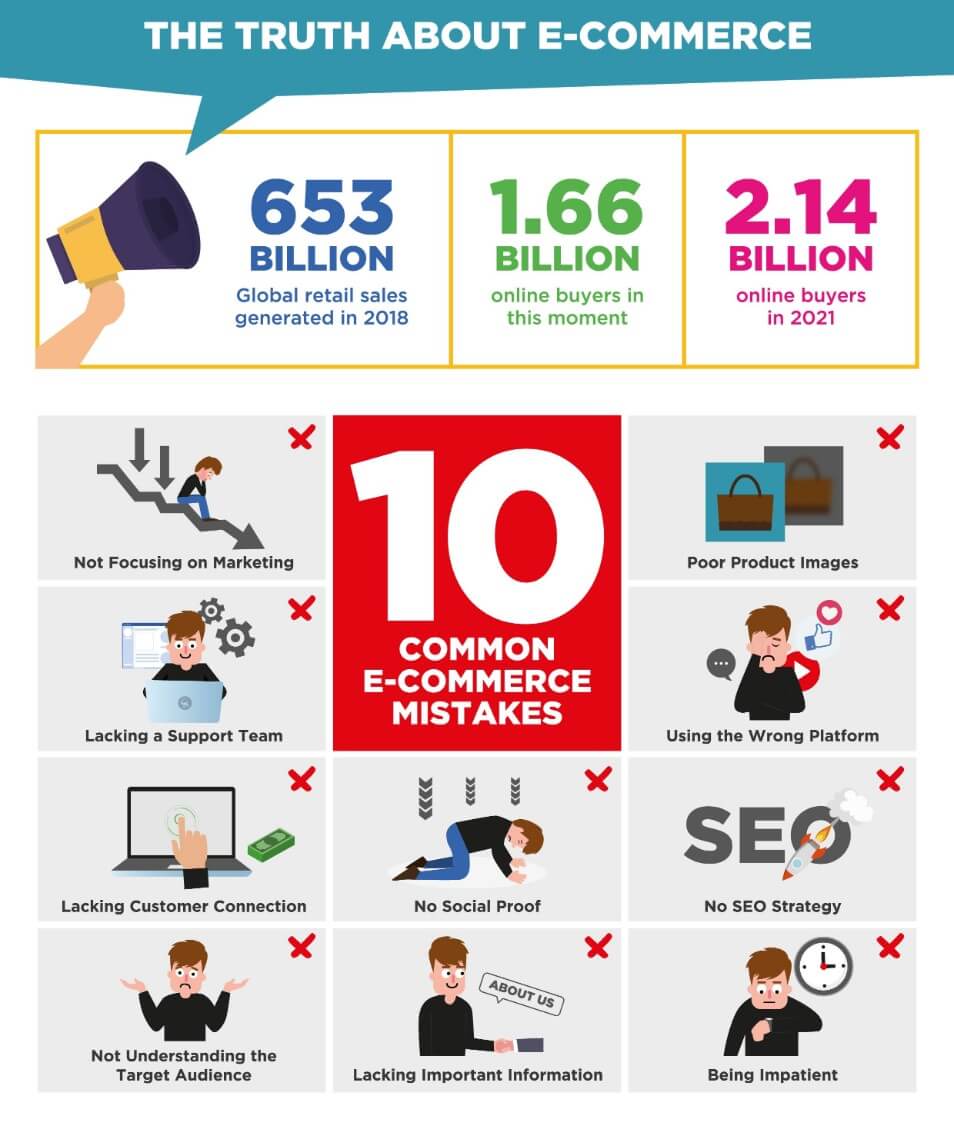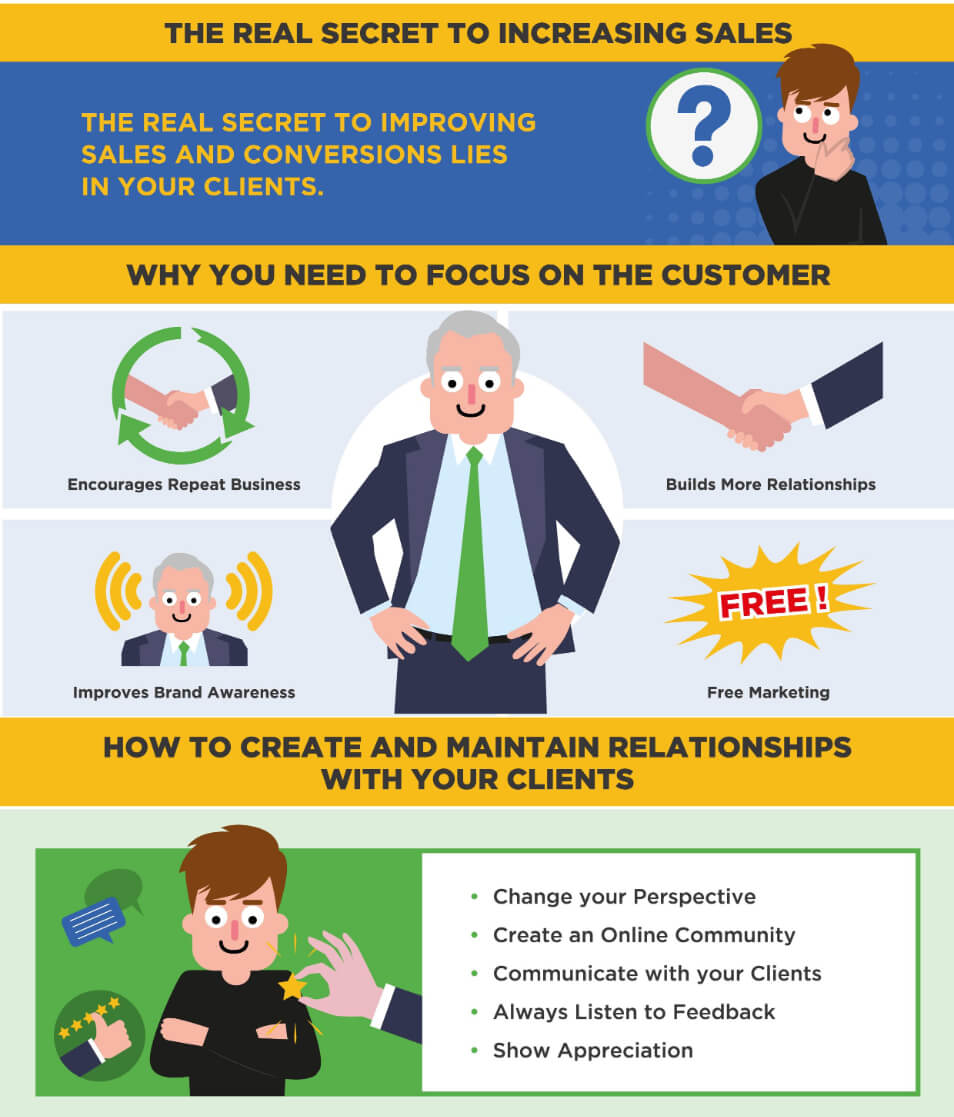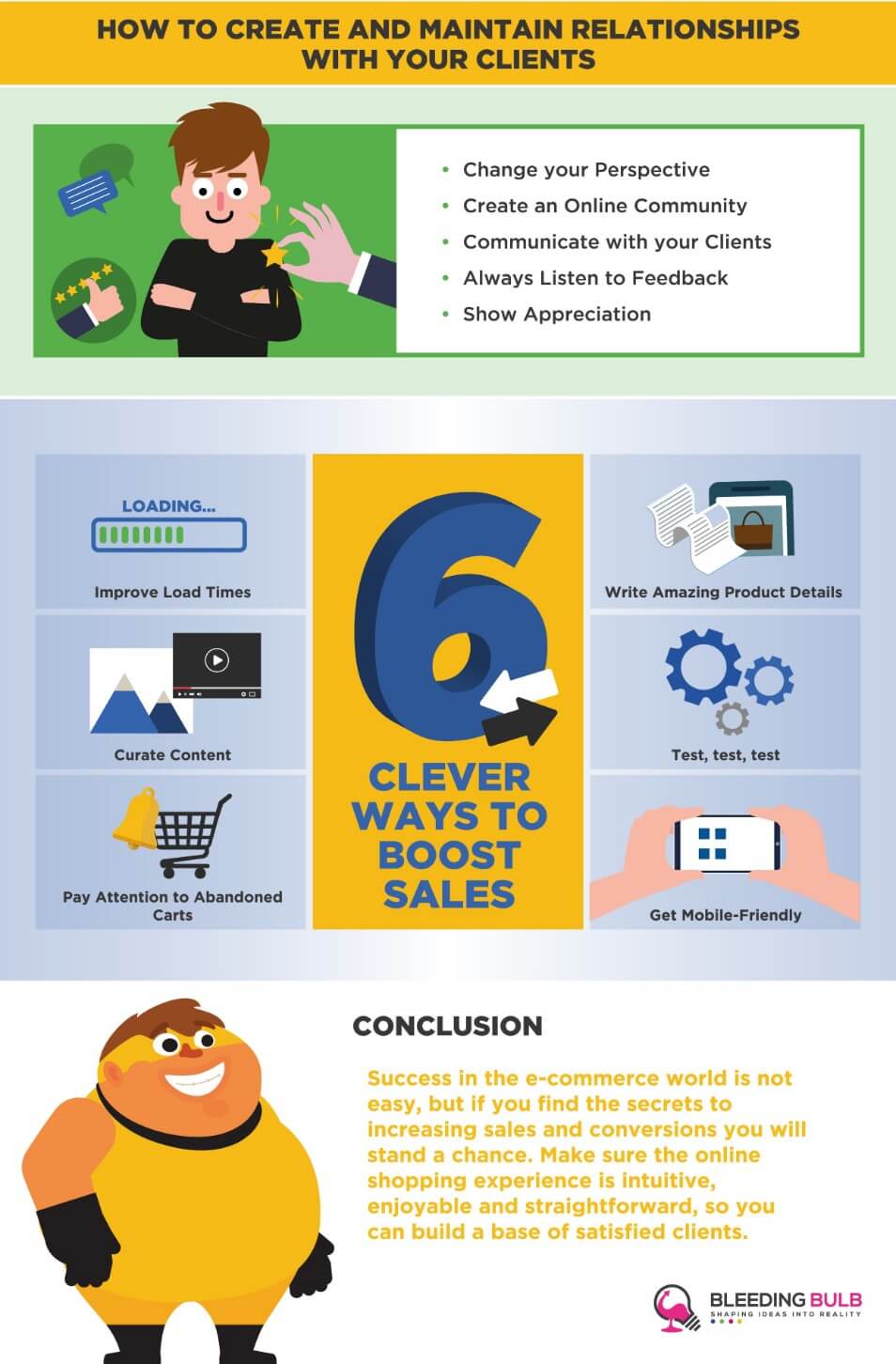10 Common Mistake Made In E-Commerce
The Real Secret to Increasing Sales
Introduction
Whether you have just opened your e-commerce website or have an established one up and running, there’s always a desire to grow. Many e-commerce businesses shut down after just a couple of months because they’re not seeing the projected growth they were expecting. This is because many aren’t aware of the challenges faced when operating an e-commerce store.

The Truth About E-Commerce
Many people are hesitant about developing an e-commerce website. As the store isn’t a physical one, it can be tricky to understand the inner workings of an e-commerce website. In the past year, the global retail sales from e-commerce generated approximately 653 billion dollars. At the moment there are 1.66 billion online buyers, however, this number is predicted to rise over 2.14 billion by 2021. So, if you’re wondering whether or not your e-commerce business will succeed, the answer is: it certainly has the potential. What’s going to determine your business’s success will be whether or not you will be able to convert traffic into sales. Just because the traffic is there, this doesn’t guarantee sales. Before we show you what you need to do to improve sales, it’s important you know what not to do.
Common Mistakes Made In E-Commerce
1) Not Focusing on Marketing
It’s easy to get sucked into the design aspect of your website, but it’s only a fraction of what you should be focusing on. Yes, your website’s design matters, but how are you going to bring people to your site? Many e-commerce businesses start marketing too late and push back the process of attracting traffic and conversions. Start marketing your site right away to create a following and brand awareness. If people don’t know you exist, it won’t be a surprise that you are not making any sales.
2) Lacking a Support Team
Because of budget restrictions early on, you may well be doing the entire set up of your website on your own. At some point, there will inevitably be certain things you’re not trained in doing. If you’ve never done marketing before, you may need the service and guidance of a professional.
Finding the right people to help you out at the get-go will save you a lot of stress and money in the long run. In addition, you reduce the risk of you burning out and stunting the website’s progress. Have a professional overlook your site and see if any holes need to be filled.
3) Choosing the Wrong Business Model
The online world is full of options and that’s why ecommerce is doing so well. It has never been easier to create a business model that tailors to your needs. For example, ecommerce websites have the choice of selling products online from their own inventory, or using a dropshipping model.
Dropshipping may be a more convenient way to operate your e-commerce business, as you do away with the need for manufacturing and storing products. Instead, you work with suppliers who send the products directly to the customer. Through this model, merchants can start their business with almost no investment, and aren’t committed to the inventory.
4) Lacking Customer Connection
Without clients, you won’t have a profitable website - it’s as simple as that. There is a major mistake e-commerce businesses often make. Many operate on a “build it and they will come” mentality, but this doesn’t create conversions. If you want sales, you need to make your clients feel like a part of your brand and community. With high-quality customer service and social media marketing, your clients will feel connected to your brand.
5) Not Understanding the Target Audience
If you don’t know your audience, you won’t be able to speak with them effectively. This is why customer service is essential to increase sales. You need to understand your audience and what they want. Opening an e-commerce website is one thing, but businesses often forget about the people buying their products. Who are they? Why did they come to your store? What can you offer them? By knowing the answers to these questions, you’ll understand your target audience and be better able to provide what they need.
6) No Social Proof
We all know how important having a social media presence is for increasing conversions. Yet, businesses are still struggling with their social proof. This is because they’re not using social media to its full extent. Be wary of the following common social media mistakes:
Lacking Followers: it’s one thing to have a running social media account, but you’re going to have to maintain an active presence on it if you want to increase conversions. Most online shoppers use social media as a way to gauge their trust in a store that they’re buying from for their first time.
Over Promoting: You’re active on social media, but you’re using traditional marketing methods that aren’t effective for e-commerce websites. Yes, you should have promotional content, but do not overdo it. You do need to increase user engagement and your social media posts must get the followers to like, comment, and share your posts.
No Customer Reviews: Before purchasing a product, most clients will read customer reviews on the site. They want to make sure the product is as advertised, and is actually worth buying. With this in mind, you should have a “view” section for clients to read. If not, visitors will start to ask themselves why you don’t have any reviews - and that’s not a good sign.
7) Lacking Important Information
Your site should not have any old content; it should be content that is up to date and provides value to the client. Many businesses underestimate the importance of an ‘About Us’ and ‘Contact’ page. Big mistake. When you look at your analytics, you’ll notice the ‘About Us’ page is usually in the top three most visited pages on your website.
People want to know who they’re going to be buying from and decide whether they trust you or not, based on their research. If you do not include a story about who you are, your location details, and email address, you might be turning away potential clients.
8) Poor Product Images
We are visual beings, we like bright and clean images. When it comes to your site, it’s no different. If you want your e-commerce business to succeed, you need to make sure it contains bright, well shot, high-resolution images that’ll catch the customer’s eye. If your customer feels your products are cheap and low-quality, you’ll miss out on the sale. Good photos are a must.
9) Using the Wrong Platform
Not all platforms are created equal. This means that it’s your responsibility to research the various platforms available and see which one will suit your e-commerce site. For example: if your niche isn’t highly searchable on Amazon, then it’s clear Amazon isn’t a platform you need to be focusing on. Identify your target audience and the platform they most often use, and go with it.
10) No SEO Strategy
SEO (Search Engine Optimization) is one of the most powerful tools you can use to drive traffic to your site. The best part of SEO is that it’s less expensive than Google Adwords or Facebook Ads. In addition, SEO will continuously work in the background while Facebook Ads, for example, will stop promoting your site as soon as you stop paying. Consider hiring an SEO expert, as the rules keep changing and you will probably not have the time or resources to keep up.
11) Being Impatient
Opening an e-commerce website is exciting, but you’re probably not going to have a sale in the first couple of months. Unless you have a significant marketing and content budget, it’s going to take longer for people to visit your site. All to often, somewhere around the four-month mark, e-commerce sites lose hope and close up shop. However, this is around the time where your site is most likely to attract your audience.
It’s important you stay patient and research your analytics, seeing if there’s a specific point in the sales funnel where your clients decide not to purchase your products. Take a couple of months to test the market and understand your customer. By knowing the mistakes you need to avoid, you’ll be able to knock down many obstacles in your way. Coming up are the secrets to increasing sales and conversions.
The Real Secret to Increasing Sales
Most e-commerce businesses think that they will increase sales and conversions just by increasing traffic to their website. But that’s wrong. The real secret to improving sales and conversions lies in your clients.
Why You Need to Focus on The Customer
Most e-commerce businesses don’t see the business-customer relationship as a tool to increase sales and conversions. In reality, however, the relationship you have with your clients is essential for growth. We’re going to discuss why the business-customer relationship is something your e-commerce business needs to focus on.Encourages Repeat Business
Understandably, when it comes to business, you’re not overly picky about who your clients are. Even though a sale is good, you want a sale to come from a returning customer. Why? Because returning clients are the ones who are going to increase sales and conversions down the line. The more returning clients you have, the more conversions.
Builds More Relationships
If your website has returning clients, you’ll see an increase in sales which is always a great sign of growth. Seeing your site grow is a significant benefit of maintaining relationships with your clients. In short, keep a healthy relationship going with your returning clients, and word-of-mouth marketing will do wonders.
Improves Brand Awareness
If you want returning clients and an increase in sales you will need to make your website look and feel trustworthy. If people trust your brand they will more readily pay for a product or service. Unfortunately this is easier said than done. Through the use of social media, you’ll be able to create engagement and trust with your clients. With time, your clients will spread the word about your e-commerce site to friends, family, and the internet at large.
Free Marketing
No one in their right mind will turn down free marketing. And yet, businesses continue to overlook the power of their clients. Have you ever received fantastic customer service? If you did, what did you do? Most likely, you told someone about it. Well, by doing that, you participated in word-of-mouth marketing.
Most of the choices we make regarding a purchase are with the help of the opinions of our friends and family. In fact, 90% of consumers are open to suggestions from their friends and family. If you build good relationships with your clients, and they’re pleased with the service, they’ll tell other people. Be sure to have a testimonials section on your e-commerce website where you will display the best customer reviews.How to Create and Maintain Relationships With Your Clients
Your clients are the secret to your e-commerce success. If you’re not focusing your attention on your clients, you’re not focusing on the right things. If you can understand your client base and build and maintain relationships, your e-commerce site will grow. To start building relationships with your customers, you will need to do the following:Change your Perspective
You need to see your clients as more than just the people who buy your products or services. If you genuinely want to create relationships with them, you need to look at the relationship as a partnership. Your clients are purchasing your products for a specific purpose, and you’re receiving the sale. Both parties benefit significantly through this partnership, and you’ll be able to use it for referrals as well. This will increase both your target audience and sales.
Create an Online Community
You don’t want one-time clients; you need returning clients. To have return clients, they need to see value in your products and feel connected to your business. The best way to do this is to create engagement via social media platforms. Whether it’s through Facebook, Twitter, or Instagram, you need people to like, tag, and comment on your posts. By doing this, other people will view your posts, and your following will grow.
Communicate with your Clients
Social media is a fantastic tool to use to communicate with your clients. They want to feel like a part of a community. This means you need to keep the communication consistent and on point. Make sure you reply to emails as quickly as possible, post on social media, and respond to your customer’s questions and complaints regularly. This is crucial for developing brand awareness.
Always Listen to Feedback
If you notice that one product isn’t receiving positive reviews, you need to find out why. Customer feedback is highly useful to improve functionality, quality of products, and conversion rates. If you ignore your customer’s feedback you run the risk of sabotaging your business. Whether you agree with the feedback or not, you need to analyze all client input and see where you can improve.
Show Appreciation
If you’re creating engaging content and making your clients feel like they’re a part of a community, you’re off to a great start. There is, however, one more thing you need to do: show customer appreciation. If you have loyal clients, treat them with a points program or free samples of your products. When it’s their birthday, send them a specialized birthday email with a discount. These are small things but show your clients you value them.
By tapping into your clients, you’ll be able to communicate and understand what they’re looking for. Once you know this information, you’ll be able to create an active community of returning clients who will gladly refer you to their friends and family.
6 Clever Ways to Boost Sales
You have the foundations of building relationships with your clients, but there are a couple of extra ways you can boost sales and conversions on your e-commerce website.1) Improve Load Times
We’ve all experienced slow loading websites. What happens when we encounter one? We leave the site entirely and move on to the next one. If you’re an e-commerce site, it shouldn’t take more than 3 seconds to load a page. We’re in an era where everything needs to be done quickly. People don’t want to wait 20 seconds for a page to load; they want it loaded now.
To improve your loading time, try to reduce file size and check the external plugins your site is using. However, we recommend starting off with optimizing your images as they usually are the culprit for slow loading pages. Consider seeking outside programming help for image and load optimization.
2) Curate Content
Content is king, and it’s crucial that you focus on developing captivating and engaging content. The products and services you provide clients are meant to solve their problems and fill a need. The client also needs to identify your product as the solution. People don’t want to test products out, they want to purchase a product they know will work for them 100%.
Content marketing is essential when developing trust and helping to educate your audience. For example, let’s say your e-commerce site sells vitamins and supplements. It is safe to assume the customer is on your site because they’re interested in purchasing supplements. They are probably not sure which ones they need, and why. This is an opportunity for your site to act as an educator.
Create informative blog posts, videos, and product guides to help inform the consumer which supplements they need. By providing this information, your clients will feel more secure and will purchase the product. By educating people, you are empowering them to make the right decisions and make the right purchase.
3) Pay Attention to Abandoned Carts
It’s easy to overlook an abandoned cart, but they are the ones you should be paying the closest attention to. The average cart abandonment rate is 68.63% on e-commerce sites. That means you’re missing out on two-thirds of potential revenue. This isn’t small money. You need to look at the various reasons why clients abandon their cart and find a strategy to reduce these rates. Here are some of the reasons why people abandon their carts:
The shipping wasn’t clear from the beginning: If a client doesn’t have a clear idea of how much the product is actually going to cost them with shipping, they’ll leave the product mid purchase. Make sure your shipping rates are clear and transparent. You have nothing to gain from being vague or misleading.
The checkout process isn’t easy: If your checkout process takes too long to complete, people are going to look elsewhere for the product. The entire purpose of e-commerce is to make shopping efficient and effortless. 11% of abandoned carts are due to a complex checkout process.
Do your clients need to register: Most people aren’t big fans of being forced to register to sites. 14% of carts are abandoned because clients don’t want to create an account. Allow the option for clients to create an account, but also have a “guest” checkout option available. People are reluctant to give away their personal data.
As you can see, cart abandonment is a huge issue for e-commerce sites. However, implementing cart recovery emails within hours and days after clients abandon their cart will remind them of their desired purchase. You can also email them promotions or discounts to help complete the sale.
4) Reduce Start-Up Costs
Most businesses start immediately in debt and this is what turns people off from startups. However, an e-commerce business can be created with minimal investment. If you want to reduce your operating costs and financial pressure, consider the business model you’re using. Dropshipping is a viable way to enter ecommerce without investing all your savings. You’ll have the money and space to work on your business during the start-up stage, rather than drying yourself out before it even gets started.
5) Write Amazing Product Descriptions
Focusing on the quality of your images on your site is crucial, but once a client starts exploring your product pages, you’ll need substance. Product descriptions are extremely important, and they can make or break your site. Your clients are not able to touch or try out the product before purchase. This means you’re going to have to describe the product in a way that makes them feel as though it’s in their hands.
With a product description, you can tell a story and create an atmosphere for the product. Don’t underestimate the power of words. Make sure the product descriptions free of grammatical errors and spelling mistakes. If your product descriptions are poorly written, potential buyers will assume the product itself is low-quality. If you’re not much of a writer, hire a professional to get the job done right the first time round.
6) Test, test, test
Your website may look like it’s fully optimized and functioning smoothly, but even the smallest changes can increase the ease of navigation and usability of your site. Your clients shouldn’t have to click around endlessly to find what they are looking for. This is why it’s crucial for you to conduct A/B testing on your site.
A/B testing allows you to understand how your clients respond to site functionality. Make an educated guess of what’s killing your conversion rates and focus on testing that area. Changing images or adding new buttons and tabs can easily boost sales, but trial and error is needed to know for sure. Even the slightest change can increase sales. Don’t be afraid to test your site and improve aspects of it. Make a regular habit of testing parts of your site and changing areas that need improvement.
7) Get Mobile-Friendly
There’s a high probability you’re reading this on your phone. If so, this is a perfect example of why your e-commerce site must be mobile-friendly. More than half of people with smartphones shop online. If your e-commerce site isn’t mobile-friendly, you’re losing out on business.
Some images and text look amazing on a desktop but don’t translate on a tablet or smartphone. Be sure to check if the text is legible on a smaller screen, and if important content is cut out. Your site should scale correctly to fit all mobile devices, so be sure to test it out on as many as possible.


